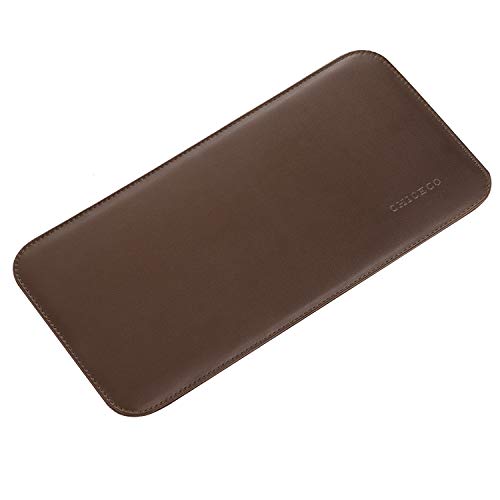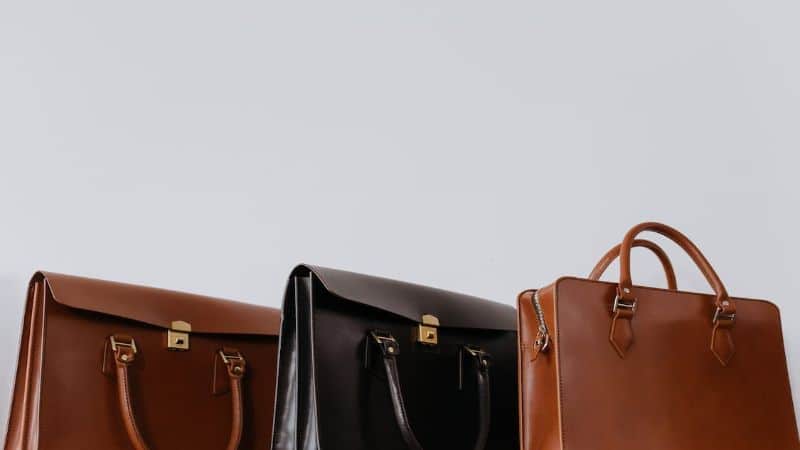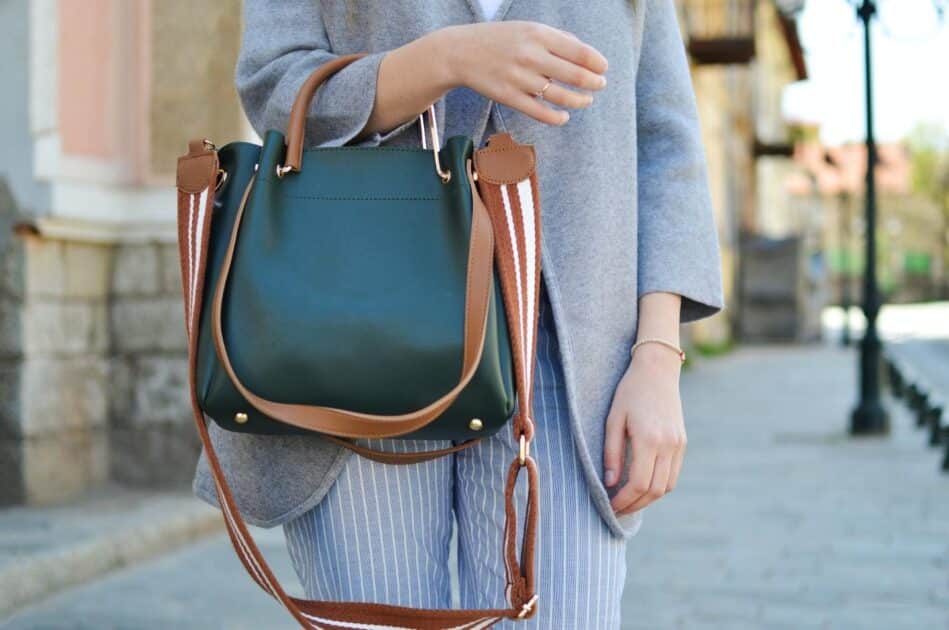You’re on the hunt for a new handbag, but with so many materials out there, how do you choose the right one? From the classic leather to the eco-friendly canvas, each material offers its own blend of style, durability, and functionality.

Leather might give you that luxe feel, but have you considered vegan alternatives that are kinder to our furry friends? Or maybe you’re all about practicality and a sturdy nylon bag is more your speed. Let’s dive into the diverse world of handbag materials and find the perfect match for your lifestyle and values.
Leather: Classic and Luxurious
When you think of premium handbags, leather typically comes to mind first. Leather handbags are prized for their durability and timeless appeal. These pieces are investment items that can last for decades if cared for properly. But what sets leather apart from other materials?
First off, leather is incredibly resilient. It ages well, often developing a patina that enhances its character over time. This means that the more you use your leather handbag, the more personalized it becomes. Yet, you might wonder about the types of leather used in handbags. Primarily, you’ll encounter:
- Full-grain leather: The highest quality, it shows natural grain and is the most durable.
- Top-grain leather: Slightly sanded down, it’s more flexible with a finer finish.
- Genuine leather: More affordable, but not as durable as the first two types.
Leather’s versatility also stands out. Whether you’re dressing up for an evening event or just running daily errands, a leather handbag fits the bill. From sleek, structured designs to casual, slouchy styles, there’s a leather bag for every look.
Consider the care required. Leather may need regular conditioning to maintain its look and feel. And, don’t forget, leather isn’t waterproof. So, if you live in a wet climate, take extra precautions like using a water-repellent spray.
Ethical sourcing is another important aspect. With growing awareness, you have the option to choose handbags made from ethically sourced or recycled leather. This allows you to enjoy the luxury of leather while being mindful of sustainability and animal welfare.
When you’re in the market for a leather handbag, remember to inspect the craftsmanship. Stitching should be even and tight, hardware should be heavy and well-attached, and the lining should be of high quality. A well-crafted leather bag not only looks better but also withstands the test of time, making it a worthy addition to your wardrobe.
Vegan Alternatives: Cruelty-free and Stylish
You’re drawn to leather for its classic appeal but also care deeply about animal welfare and environmental sustainability. Fortunately, vegan leathers offer you a way to enjoy the same chic look without compromising your values. These materials are crafted from polymers or plant-based sources, offering durability and style without using animal products.
Polyurethane (PU) Leather is a popular synthetic alternative. It’s lightweight, comes in various colors and textures, and is easy to maintain. While it mimics real leather’s aesthetic, it does not age and patina in the same way. However, its manufacturing process is not always the most environmentally friendly, so it’s worth seeking out brands that use less harmful production methods.
Another fantastic option is cork leather. Made from the bark of cork oak trees, it’s not only sustainable but also water-resistant and surprisingly robust. And as an added bonus, harvesting cork does not harm the tree, making it a renewable resource.
Innovations in the industry have also brought forward materials like Pinatex, made from pineapple leaf fibers, and Mushroom leather, derived from mycelium. These materials are quickly gaining traction as they mimic leather’s texture while being biodegradable and eco-friendly.
Here’s a quick rundown of some vegan leather alternatives:
- Polyurethane (PU)
- Cork leather
- Pinatex (pineapple leaves)
- Mushroom leather
- Recycled rubber
- Washable paper
Maintaining vegan handbags usually involves just a wipe down with a damp cloth. For tougher stains, a mild soap solution will suffice, but always check the manufacturer’s instructions. Like their leather counterparts, they’re versatile and can complement any outfit, whether you’re going to the office or hitting the town. Quality craftsmanship in vegan handbags can yield a product that’s both fashionable and functional, proving you don’t have to sacrifice style for ethics.
Canvas: Eco-friendly and Versatile
When considering handbag materials, canvas stands out for both its eco-friendliness and versatility. Traditionally made from hemp, this sturdy fabric has evolved, often crafted now from cotton, linen, or a blend of both. What’s more, organic canvas options are widely available, minimizing your environmental footprint.
Ease of care and durability make canvas a go-to material for everyday totes and crossbody bags. You’ll find it requires little maintenance, with most stains easily removed with simple soap and water. No need for specialized cleaners or conditioners. Plus, the fabric’s robust nature resists wear and tear, ensuring your canvas bag can handle daily use without showing signs of distress quickly.
Another major bonus? Canvas handbags often come at a more attractive price point compared to their leather counterparts. Without sacrificing quality, you can snag a stylish piece that won’t break the bank. And with the variety of prints and colors available, canvas bags offer endless options to match your personal style. Whether you’re headed to the office or the beach, there’s a canvas bag to complement your outfit.
Canvas also works well with other materials. Designers frequently pair it with leather accents or metal hardware to elevate the look. It’s not unusual to find a canvas tote with luxe leather straps or a chic satchel adorned with shiny zippers.
Moreover, canvas is lightweight, making it an ideal material for those larger bags you fill to the brim. You won’t be bogged down by the weight of the material itself, a common complaint with some other fabrics.
« Different Handbag Sizes: Find Your Perfect Match for Style & Function
Handbag vs. Cabin Bag: Uncover Their Unique Travel Roles »
Brands committed to sustainability are increasingly choosing canvas for their handbag collections, recognizing that style and eco-consciousness can indeed go hand in hand. As you curate your handbag collection, consider the impact of your choices and how materials like canvas can benefit both your wardrobe and the world around you.
Nylon: Practicality and Durability
Nylon handbags are a solid choice when you’re looking for both durability and practicality. This synthetic fabric was originally developed as an alternative to silk, and it has found a permanent place in the world of accessories due to its incredible resilience and ease of maintenance. Nylon’s strength means your bag can withstand daily wear and tear while maintaining its shape and appearance.
With water-resistant properties, a nylon handbag won’t leave you fretting over unexpected spills or rain. Cleaning is usually as simple as a quick wipe with a damp cloth, and for more persistent stains, mild soap often does the trick. The material’s longevity is one of its standout features, ensuring that your purchase remains a staple in your wardrobe for years.
Here’s why nylon stands out as a handbag material:
- Resistant to water and stains
- Maintains structural integrity
- Lightweight, reducing strain on your shoulders
Additionally, nylon offers an attractive cost-benefit ratio. More affordable than genuine leather, it’s a budget-friendly option without sacrificing quality. And when it comes to aesthetics, nylon can surprise you. This material isn’t confined to basic designs; modern technological advancements have given rise to a wide range of textures and finishes, allowing for a sophisticated look that rivals more traditional materials.
For those with ethical concerns, nylon bags can be a more animal-friendly option than leather. Many brands now use recycled nylon, reducing the environmental footprint associated with production. However, it’s worth noting that nylon is not biodegradable, and so considerations regarding sustainability should be taken into account.
Whether you’re in the market for an everyday tote or a sleek crossbody, nylon’s versatility can cater to your needs. With brands continually innovating, the future of nylon handbags looks as promising as their enduring past.
Conclusion: Find the Perfect Match for Your Style and Values
You’ve seen the vast array of options out there for handbag materials each with its own set of benefits. Whether you’re on the hunt for something cruelty-free or a bag that’ll stand the test of time and weather nylon’s versatility and practicality might just be what you’re looking for. Remember though while it’s a champion at keeping your belongings safe from the elements it’s not the greenest choice on the shelf. So when you’re picking out your next companion consider what’s most important to you. Is it durability affordability or the environmental footprint? Whatever you choose let your handbag be an extension of your personality and a statement of what you stand for. Happy shopping!
Frequently Asked Questions
What are some vegan alternatives to leather handbags?
Vegan alternatives to leather handbags include materials like nylon, cotton canvas, cork, and various synthetic leathers. These materials avoid the use of animal products while providing various styles and functionalities.
Are nylon handbags water-resistant?
Yes, nylon handbags are water-resistant, which makes them a practical option for everyday use, as they can withstand different weather conditions without being damaged.
How do you clean a nylon handbag?
Cleaning a nylon handbag is straightforward: usually, wiping it down with a damp cloth is sufficient. For more stubborn stains, a mild soap solution can be used, followed by air drying.
Are nylon handbags durable?
Nylon handbags are known for their durability. They maintain their shape and appearance over time, resist wear and tear, and are generally lighter and more flexible than leather, which contributes to their longevity.
Is nylon an affordable material for handbags?
Nylon is a more affordable option compared to genuine leather. This makes nylon handbags accessible to a broader range of consumers without compromising on style or quality.
Do any brands use recycled nylon for handbags?
Yes, some brands use recycled nylon in their handbags as a way to reduce environmental impact. Recycled nylon often comes from pre-consumer waste and post-consumer plastics like fishing nets and fabric scraps.
Is the production of nylon handbags sustainable?
Although recycled nylon is used by some brands to improve sustainability, nylon itself is not biodegradable. Sustainability-conscious consumers should consider the environmental impact of nylon production and look for brands that prioritize eco-friendly practices.










